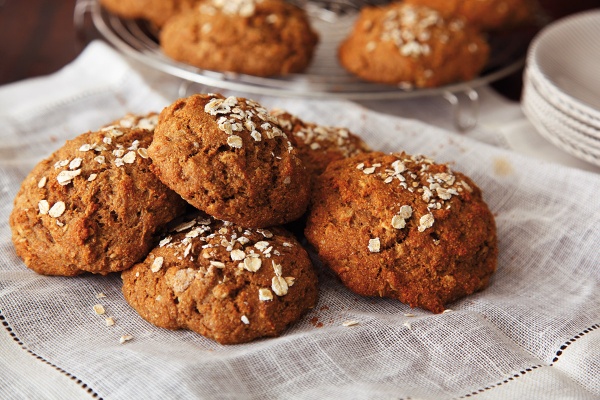Irish Oaten Rolls Question/Problem
Asked by frolis. Answered on 23rd March 2011
Full question
I've made these oaten rolls (from p87 of KITCHEN) twice. The first time I cut the recipe in half and used agave syrup not honey since I didn't have any honey. They looked exactly like the picture but tasted strongly of baking soda, so I figured I made a mistake when halving the recipe...oops The second time, today, I made the recipe exactly as written. they looked nothing like the picture, or the first batch - they were wet, not shape-able and tasted only OK. Much less oat-y. What might I have done wrong this time?
Our answer
The mixture for the oaten rolls is quite damp as this gives the rolls a much better texture - the crumb tends to be moist and tender rather than dry and heavy. Bread bakers have a saying for dough which is "the wetter the better", though a damper dough can be more difficult to shape.
Once you have mixed the initial dough it may take a few minutes for the bicarbonate of soda (baking soda) to act but as it creates air bubbles the dough will firm up a bit. However when shaping the rolls you won't be able to form them into balls as you may with a traditional dough, instead you need to make mounds on the baking sheet and then pat these gently into shape (flouring your hands will help slightly when shaping the rolls). Also when the rolls are baked they do not rise that much (as you should be able to see from the photograph on p86 of Kitchen).
Nigella uses an organic wholemeal (wholewheat) flour but different flours do tend to absorb liquids in different quantities so if you are making the rolls again you may like to hold back 60ml/1/4 cup/4 tablespoons of the liquid in the initial mixing, adding it in later if the dough is then too dry. However do try to avoid over-mixing the dough as the glutens in the flour will toughen with the extra mixing.





Tell us what you think
Thank you {% member.data['first-name'] %}.
Explore more questionsYour comment has been submitted.